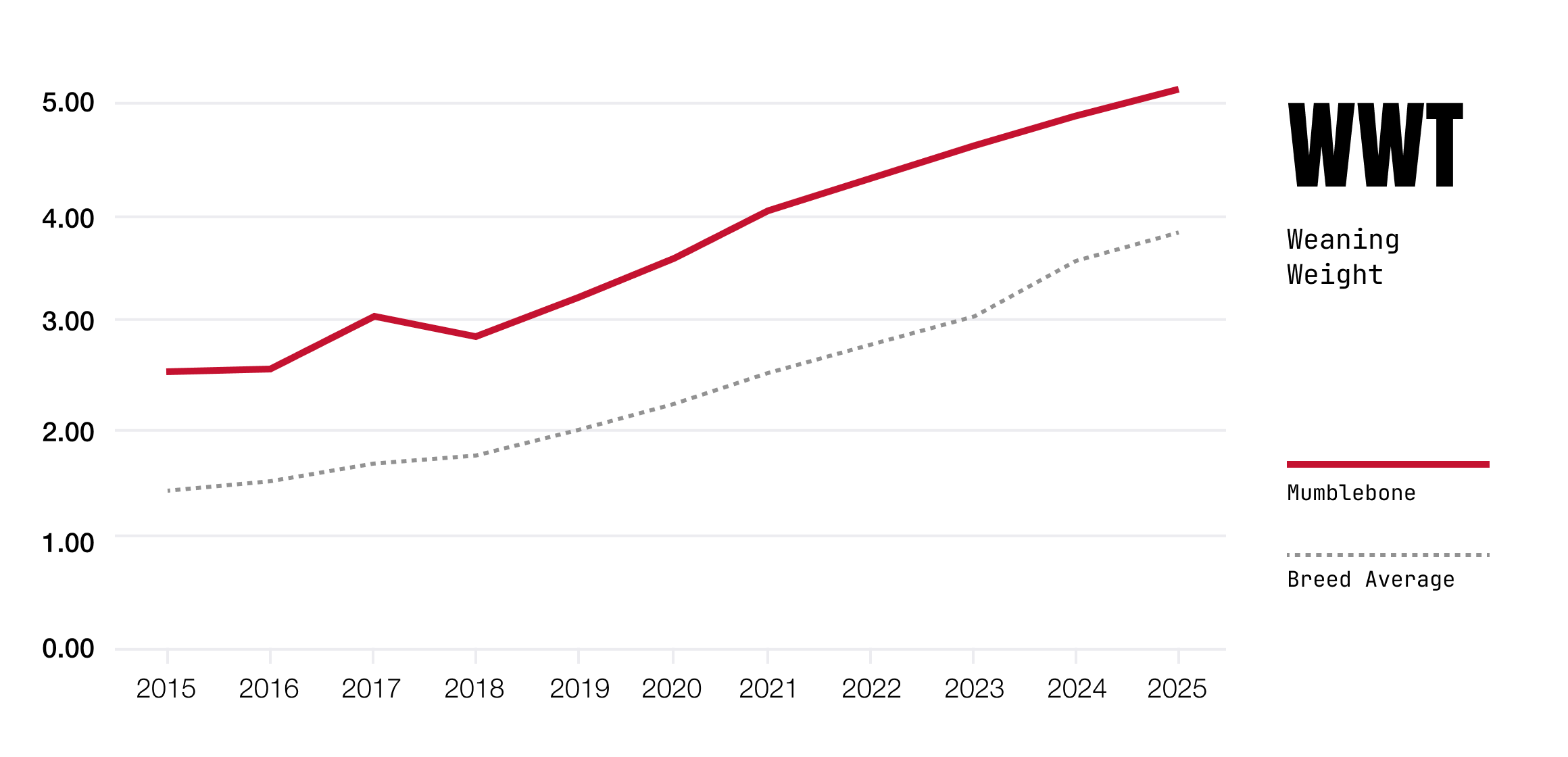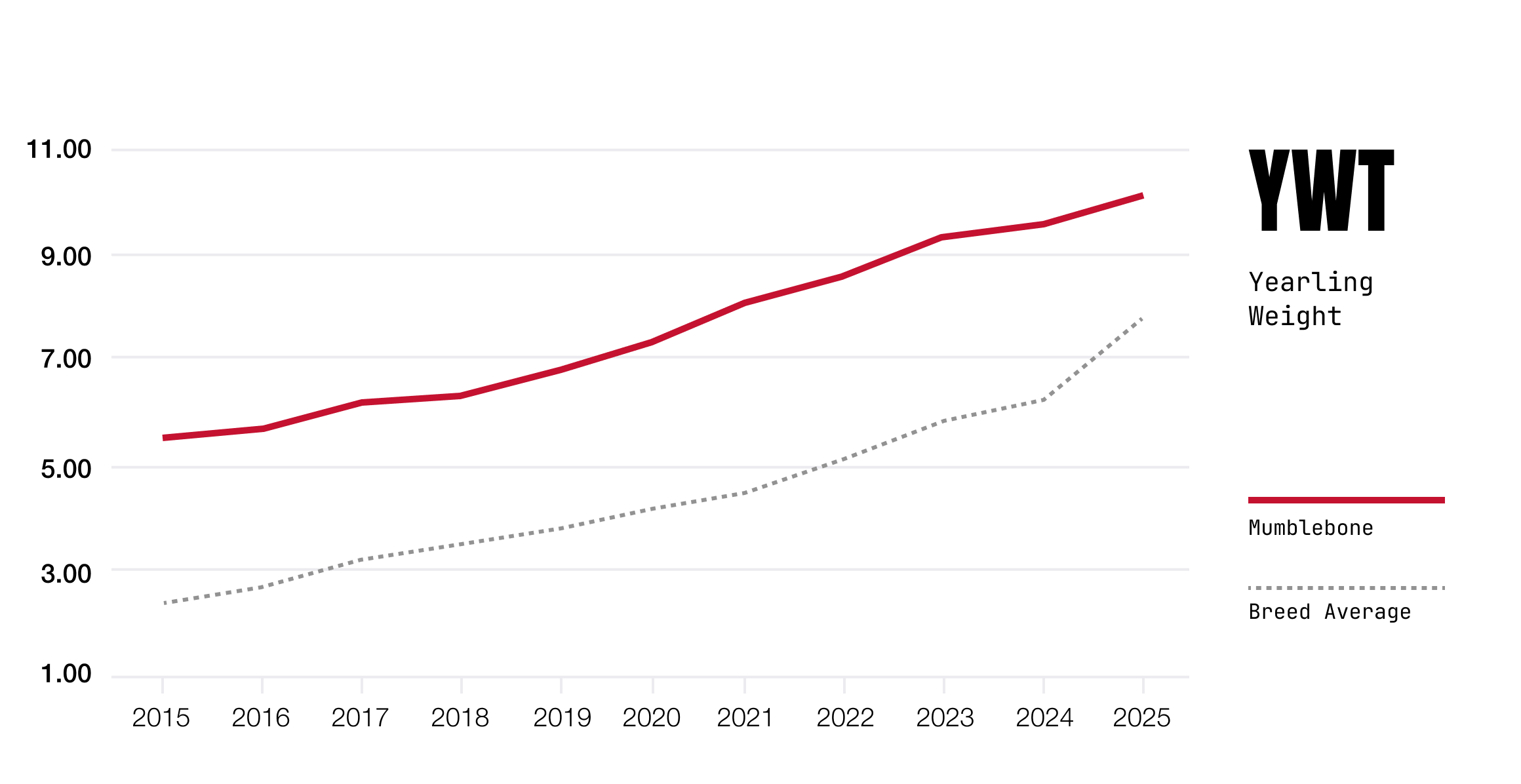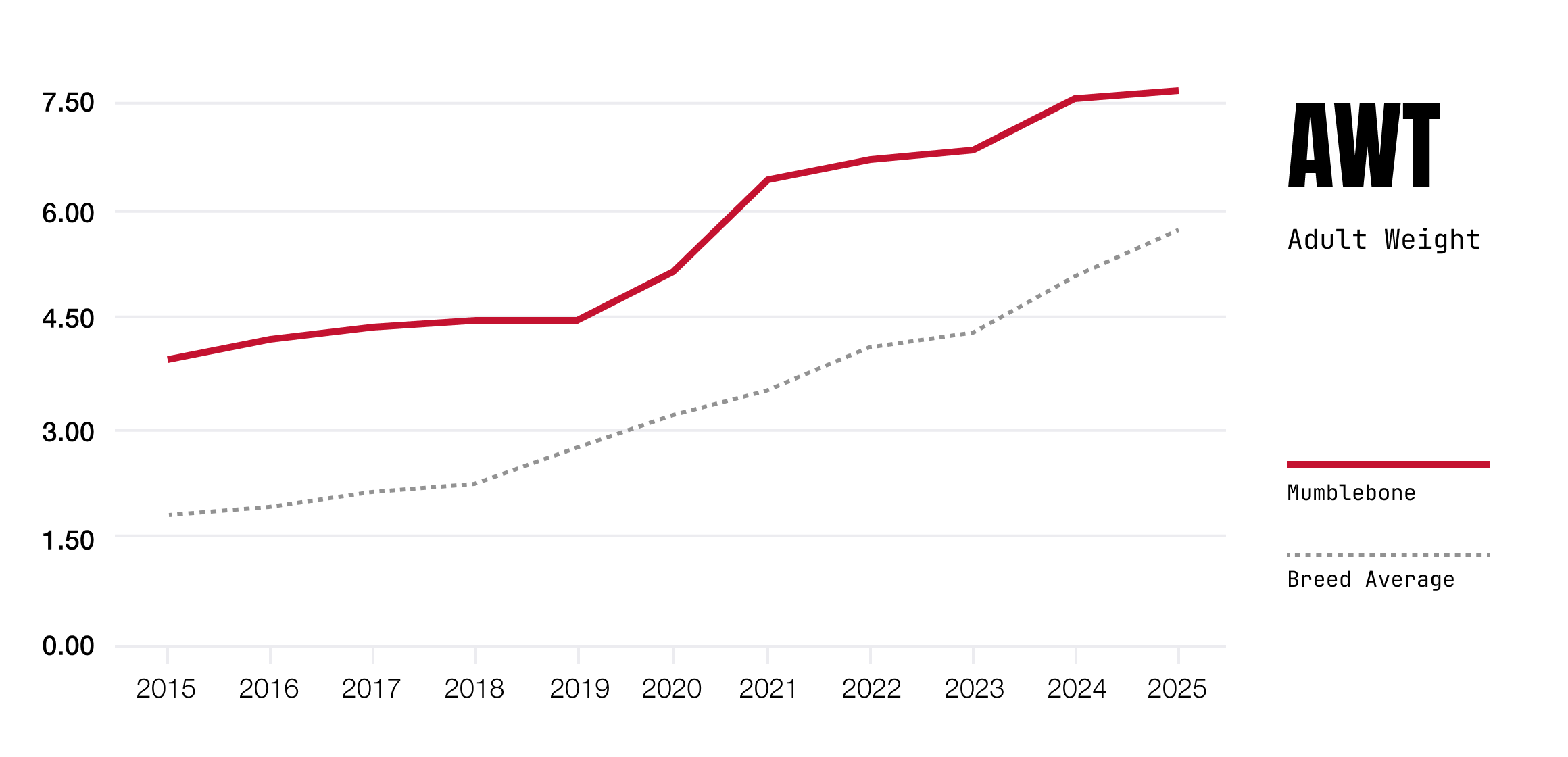Our philosophy on Growth is to accentuate the benefits of high early growth while maintaining the efficiencies of moderate adult weights.
We combine muscle depth with our growth selection to help cap adult weights and strike the balance that ensures high reproductive performance, increased fleece weight, improved ewe lamb joinings, earlier marketability, higher lean meat yield and controlled adult weight.
Weaning Weight
We want our sheep to grow early, reach their moderate adult weight early and then stop.
WWT identifies the early growers that we want in the program. It’s also important to identify the lambs that thrive from birth to weaning, as opposed to starting slowly & continuing on to high adult weights.

Correlations of increased growth
- Improved lamb survival
- Improved maternal efficiency, weaning high percentage of lamb to body weight of ewe
- Need to balance high WWT with moderate AWT
- Higher reproductive performance
- Marketable at earlier ages
- Higher fleece weight
- Higher lean meat yield
- Increased fibre diameter
- Mature weight goes up
- Lamb birth weight goes up
Post Weaning Weight
PWT is the trait that identifies the lambs that thrive after weaning.
This is the trait we focus on for ewe lamb joinings, as well as for early turn-off of wether lambs.

Correlations of increased growth
- Higher reproductive performance
- Marketable at earlier ages
- Higher fleece weight
- Higher lean meat yield
- Increased fibre diameter
- Mature weight goes up
- Lamb birth weight goes up
Yearling weight
YWT was the trait we focused on when we first started using ASBV’s in 2004.
It was considered the early growth trait at that stage, though selection for early growth has now shifted forward to PWT.

Correlations of increased growth
- Higher reproductive performance
- Marketable at earlier ages
- Higher fleece weight
- Higher lean meat yield
- Increased fibre diameter
- Mature weight goes up
- Lamb birth weight goes up
Adult weight
AWT is an important component of stocking rate.
We are selecting for early growth, WWT & PWT, while also keeping a cap on AWT. This is achieved through direct selection for moderate AWT while combining high levels of muscle with early growth.
Standard Reference Weight (SRW) is the weight of a dry, mature animal, in condition score 3. Our current SRW is around 67kg’s.
Other merinos with similar, high early growth, but with low levels of muscle will have a SRW closer to 80kg’s. This significantly reduces stocking rate & has become a real concern for the people handling these heavy sheep, particularly shearers.

Correlations of increased growth
- Links to high WWT
- Need to balance moderate AWT with high WWT
- Higher reproductive performance
- Marketable at earlier ages
- Higher fleece weight
- Higher lean meat yield
- Increased fibre diameter
- Mature weight goes up
- Lamb birth weight goes up
Our aim is to continue increasing early growth without over doing late growth. Early growth has a close correlation with late growth, so we need to be careful we don’t accidentally breed oversized adults in our pursuit of fast growing lambs.
There are two ways to moderate, or cap, adult weight:
- To select directly for moderate adult weights.
- To combine muscle in our selection with growth as muscle helps cap adult weight.
By keeping our adult weights at moderate levels we have the chance to increase stocking rate through running more adults on the same area. If those moderate weight adults have the same rate of growth in their lambs, we have the win-win situation of more ewes producing lambs that have the same early growth as their high adult weight sisters, without the added maintenance costs of high adult weights.
Lamb survival & selling wether lambs at an earlier age are two of the key benefits of high early growth.
Joining ewe lambs is the other major benefit of early growth. This needs to be selected for in conjunction with early puberty & we’ll look more at this in Reproduction.
Genetic differences in live weight reflect the growth potential of an animal. Our animals are measured at several different stages to help generate the growth curve that selection decisions are based on. We are targeting high early growth with a moderate adult weight. Selection for EMD (eye muscle depth) helps cap adult weight without compromising the desirable early growth.
Correlations of increased growth:
- Higher reproductive performance
- Marketable at earlier ages
- Higher fleece weight
- Higher lean meat yield
- Increased fibre diameter
- Mature weight goes up (selection for muscle helps cap adult weight)
- Lamb birth weight goes up
For more info visit
Since our first joining a decade ago we’ve seen a near doubling in weaning rate. Not only do we now have more lambs, they grow faster and produce a more marketable wool clip.
We’ve run Mumblebone genetics from the rangelands to the Great Dividing Range and these sheep have outperformed other genetics, and breeds, in every environment.
Bellevue Pastoral Enterprises, Tottenham NSW

